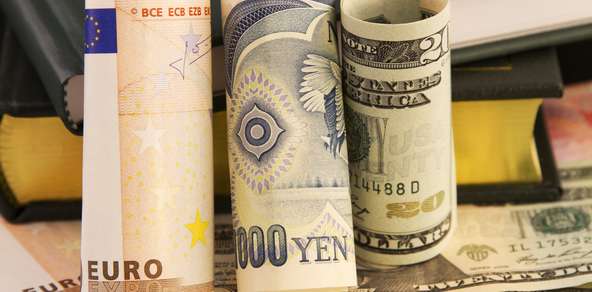The euro weakened for a sixth day in series versus the yen in the morning session, heading for its second annual drop whilst European stocks shed their advances amid the mounting concerns that the severe austerity measures, imposed by the technocrats in order to counter the region’s debt crisis, will inevitably slow growth or send certain countries’ economies and the wider Eurozone into recession.
Europe’s shared currency fell to 100.06 yen yesterday, the lowest level since June 2001, and traded at 100.19 yen today. That psychological level of 100 may act as a ‘magnet’ for weeks to come. Data next week from a department of the EU may confirm that European manufacturing contracted for a fifth straight month.
The Global equity market lost circa $6.3 trillion in value this year according to Bloomberg data as the debt crisis and slowing global economic expansion weighed on demand for riskier assets. The Stoxx 600 retreated 12 percent in 2011, bank shares dropped 33 percent, the worst performance sector among the key 19 industry groups. The Stoxx 600’s decline this year compares with an 18 percent drop in the MSCI Asia Pacific Index and a 0.4 percent increase in the S&P 500. Exchanges in London, Dublin and Frankfurt will close early today but based on current pricing these bourses’ year on year performance will be mainly negative. Here’s a quick snapshot of the year on year figures.
[unordered_list style=”red-x”]
- EURO STOXX 50 – down 18.36%
- UK FTSE – down 6.98%
- GERMAN DAX – down 15.52%
- FRANCE CAC – down 18.84%
- ITALIAN MIB – down 25.92%
- GREECE ASE – down 52.74%
[/unordered_list]
Market Overview
The euro slid 0.5 percent versus the yen and weakened 0.3 percent against the dollar at 9:45 a.m. in London. The Stoxx Europe 600 Index rose 0.1 percent, having earlier climbed 0.5 percent. Standard & Poor’s 500 Index futures fell 0.1 percent. Yields on U.K. government bonds fell to a record low and Italian 10-year yields remained at more than 7 percent. Gold and copper rebounded as natural gas fell to a two-year low.
Gold rose 1 percent to $1,562.01 an ounce, the first gain in four days, and copper climbed 1.2 percent to $7,514.50 a metric ton, the first increase this week. Natural-gas futures dropped as much as 0.8 percent to $3.001 per million British thermal units, the lowest since September 2009. S&P’s GSCI Total Return Index of raw materials slipped 1 percent this year.
The Shanghai Composite Index climbed 1.2 percent, its biggest gain in two weeks. The gauge has collapsed by 22 percent this year, the most since 2008 and extending last year’s 14 percent drop, on concerns that increases in borrowing costs and Europe’s debt crisis will derail the economic growth in the world’s second-largest economy. The index’s 33 percent drop since 2009 makes it the worst performer among the world’s 15 biggest market.
Market snapshot as of 11:00 am GMT (UK time)
The Nikkei closed up 0.67%, the Hang Seng closed up 0.2% and the CSI closed up 1.2%. The ASX 200 closed down 0.36% finishing the year down 15.32%. The main European bourse indices are experiencing mixed fortunes in morning trade; the STOXX 50 is up 0.15%, the UK FTSE is down 0.22%, the CAC is up 0.05% and the DAX is up 0.12%. The SPX equity index future is up 0.15%. ICE Brent crude is up $0.22 a barrel at $107.79 whilst Comex gold is up $32.4 per ounce bouncing back from its six month low.






Comments are closed.